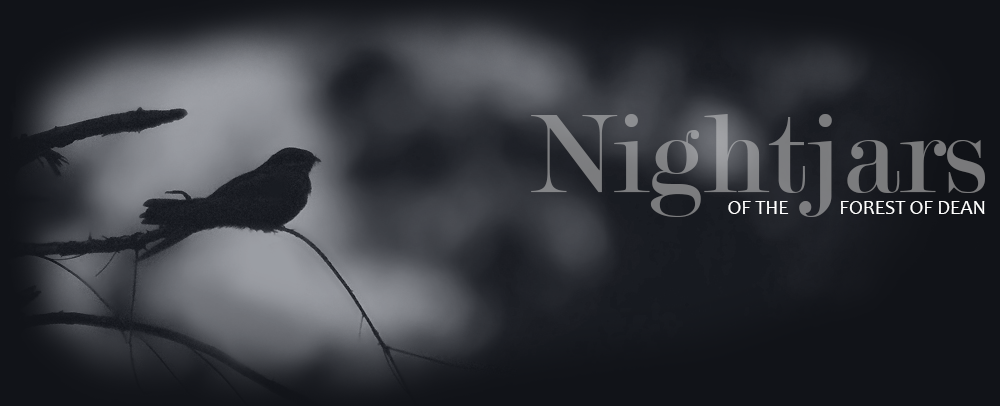Already well into the 2022 season, we thought it was about time we wrote something about the 2021 season!
The first bird of the 2021 season was on May 12th at site AF, where a male was seen in rainy conditions. Two nights later, there were 2 males seen at site AY, but the first part of the season was cold and wet, with observers from all over the country reporting that Nightjar were either late in arriving or hard to find. 7 consecutive visits to various sites at the end of May produced just one sighting. By the end of May we were aware of five sites holding birds.

Our initial deployment of the AudioMoth recording devices had been intended to cover all the sites where we had found birds in 2020, but in the event little data was captured, due to a mixture of human error, equipment failure and the persistent poor weather. One device went missing at site AA, in the centre of the Forest. It had been attached to a deer fence, a large square of which had been cut away when we went to retrieve it, and the device was gone. Incidentally, removal of our devices is trivial as they are not secured. However, a replacement subsequently recorded activity across 17 consecutive nights, with indication that there was a pair on territory there. Devices were left at 2 fairly new clearfells in the south of the forest for 2 weeks but no Nightjar vocalisations were detected at either. Three other sites recorded no Nightjar in 14 day recording periods.

In addition to our deploying AudioMoths for longer periods, this season we also adopted the strategy of ‘drop and recover’ whereby we would drop an AudioMoth at a site close to a separate site which we would then spend an evening monitoring in the field, and then recovering the AudioMoth later that same night. This proved helpful in clarifying something that can often be confusing in the field when different sites are within audible range of each other. In fact, even within one site, accurately and confidently arriving at the correct number of birds can sometimes be a challenge without later analysis of data provided by both the AudioMoths and field recordings. These sound recordings, often when married up with the video data, can even help us interpret some of the things we hear on future nights in the field. For instance, a recording of a female churring at the nest during nest relief at one site made this same sound instantly recognisable in the field at another site.
Ringing
Two pulli were ringed on June 28th at Site AQ. On June 30th a male and female were caught and ringed at Site AY. Neither had been caught previously, but video from a nearby nest showed that the male attending that nest did have a ring. Nest camera evidence from another nest showed that the female was ringed. None of the images allowed the numbers to be read at either of these nests.

Tagging
The male caught at Site AY on June 30th was radio-tagged and on several nights was subsequently located roosting c350m away. We were fairly sure this male was unpaired and he sang at various places along the ridge. He was last detected on August 3rd.
Breeding
Three nests were located; at sites AQ, AY and AW. Only one of these fledged young. One was assumed to have been predated at the egg stage and the other failed in unusual circumstances. The nest camera showed that the eggs had become stuck to the female, sometime after she had returned to the nest after feeding in the evening. This is documented more fully with video here. We also saw signs of successful breeding at site AZ, where two fledged young were seen.
We found 14 sites with at least one observation of Nightjar, and could account for around 18 males. Analysis of sound recordings, both manually obtained and from AudioMoths, is ongoing and should enable us to be more precise about this.
DNA swabbing
All adult and young birds that were ringed/tagged were also DNA swabbed. This is to contribute data towards a wider national study of the species.
The year ahead
In 2021 we received an anecdotal account of birds feeding at a farm in numbers, outside of the forest. This is something we’d really like to investigate and with 2022 seeing us hopefully deploy a GPS tag for the first time, maybe we’ll find some clear evidence of this. Our ongoing quest to carry out as complete a census of the Forest of Dean Nightjar population will of course continue!
